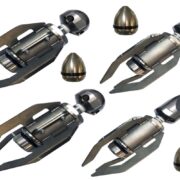A railroad tie is a rectangular laid support for the rail tracks made up of concrete, wood, and steel. The major function is to keep the rail trucks upright and to the correct gauge. Wood has been regularly used for this purpose, and it requires having a chemical compound applied without changing the structural property.
Some of the preservation chemicals include the use of water-soluble salts and volatile base salts. These are usually administered to the wood through brush application, dipping the wood, and open tank immersion, among other many methods. There are different types of wood used in the railroad ties that include cypress and tropical hardwood. They are preferred because of their durability and aesthetic appeal.
We know rail trucks last for many years, so the wood must last as long as the railway tracks. In this write-up, we are going to look at the importance of wood preservation to railroad ties. Here are the three major reasons for preserving the wood for the railroad ties:
Table of Contents
Durability
Wood is dominantly a durable material, and for this reason, it is best to have it preserved. When it is correctly preserved, it serves its function well. This means that there will be lower costs in changing ties and hiring personnel to repair the trucks. In the end, it has a ripple effect on the profitability of the railway company and the timely delivery of freight to the end consumers. Wood ties are engineered to operate under heavy load conditions.
Reliable
When wood is preserved, it is not prone to damage by insects such as termites and ants. In addition, the wood is not prone to fungi which end up causing decay. The wood is dependable as it is available in most places because you require both hard and softwood in making railroad ties. Wood has the natural flexibility to perform the critical function of a railroad tie.
Wood becomes flexible
Once the wood has been preserved, it becomes lighter in terms of weight, thus more flexible. The reason is that their role is for cushioning and shock absorption. It means that when the train passes, it is neither too soft nor hard. The wooden tie provides this needed action.
In addition, the wooden railroad tie is most preferred because of its safety performance. It is also easier to connect the wooden rail ties to the rail fasteners. Wooden rail ties have a simple manufacturing process, and it is quite cheaper than other materials.
In conclusion, wooden rail ties have been widely used in the railway industry because of their various benefits. For this reason, it is best to preserve wood so that it can last longer and serve its purpose better. Scientists constantly search for better ways of preserving wood. They strive for the wood to continue serving its purpose of cushioning and shock absorption of rail ties. It is best to consider the three main preservation methods mentioned above to make the best use of the wood.













Comments